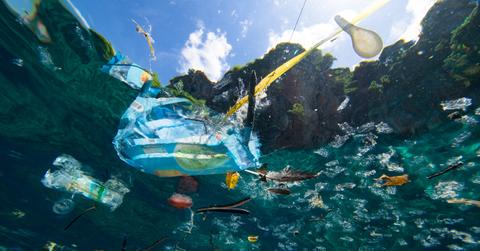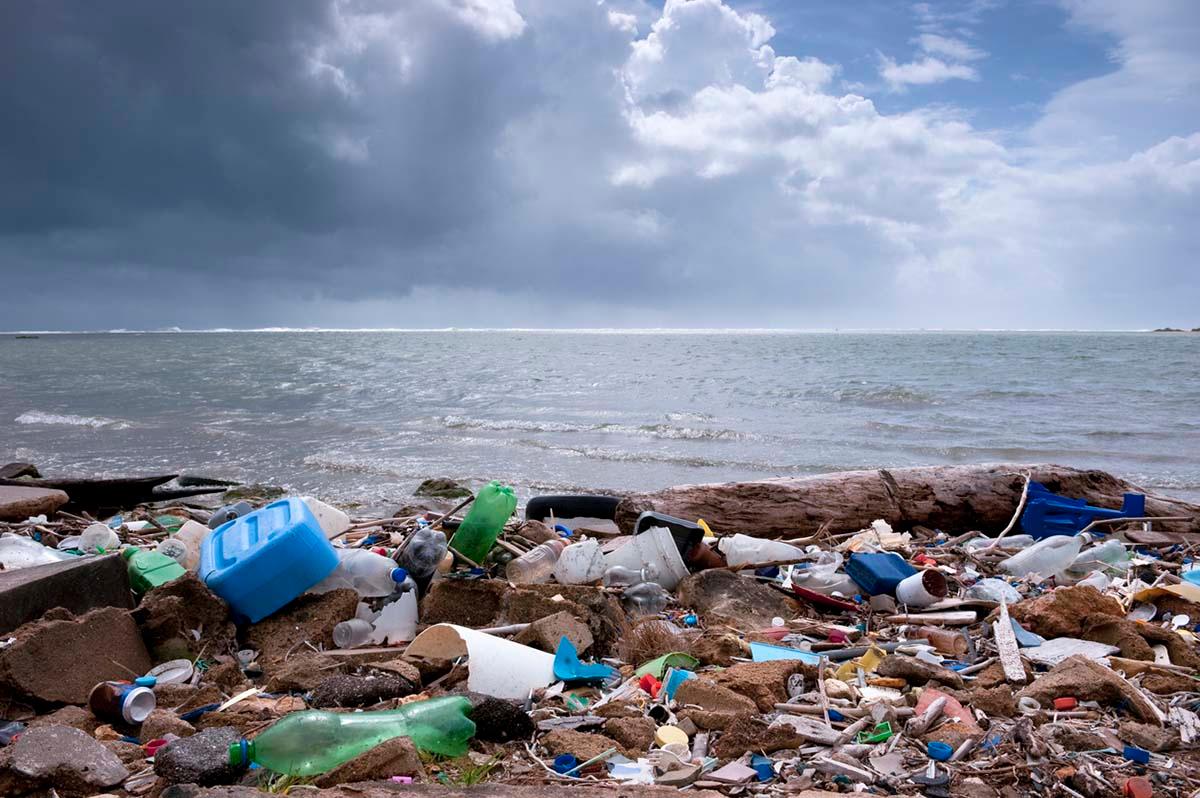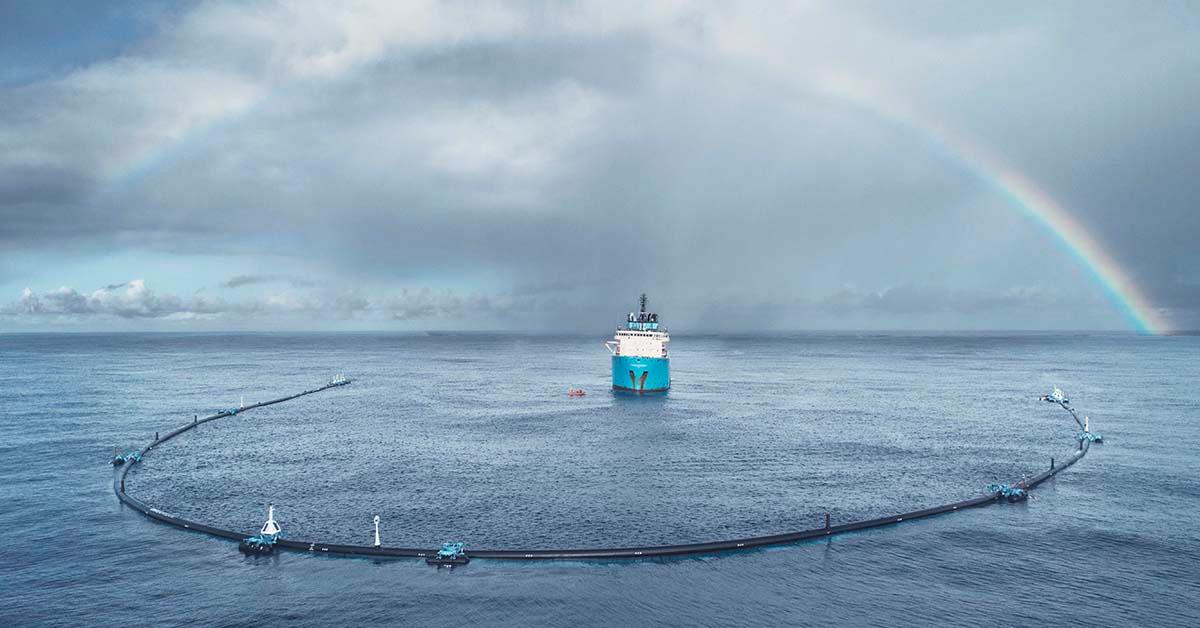What Is Ocean Plastic?
Updated Nov. 19 2020, 9:39 p.m. ET

The ocean is home to all kinds of creatures. Striped and spotted fish, chirping dolphins, barking sea lions, and those terrifying great whites. But it’s also home to a ton of plastic trash, and that’s a problem for all the animals that live there.
Ocean plastics are a major concern for environmentalists around the world. But how did this garbage get so out of control, and what can we do about it? We explain the pollution history, growth, and solutions in this comprehensive guide below:
Where does ocean plastic come from? 
According to the National Ocean Service, the vast majority of ocean pollution — a whopping 80 percent — comes from the land. It’s often caused by something called nonpoint source pollution, which occurs when the rain or melting snow picks up garbage on the ground, carrying the runoff into waterways.
Smaller waterways like rivers tend to wash a ton of plastic into the ocean, with 10 of these rivers doing most of the destructive work. The World Economic Forum reports that 90 percent of the plastic in our oceans comes from just eight rivers in Asia and two in Africa: the Yangtze, Indus, Yellow, Hai He, Ganges, Pearl, Amur, Mekong, Nile, and Niger. All of these rivers lie near communities with high populations and lackluster waste management systems, making it easy for plastic waste to drift into the water.
When did ocean plastic pollution start?
The ocean plastics problem didn’t begin until plastics went mainstream — and before they could do that, they had to be invented.
In 1869, John Wesley Hyatt created the first synthetic plastic by combining a cellulose derived from cotton with the waxy solid camphor to form celluloid. Hyatt was simply trying to collect the $10,000 reward a billiards company was offering to anyone who developed a good alternative to ivory, the default material used in pool balls at the time. But his breakthrough paved the way for Leo Baekeland to discover the first totally synthetic plastic — one containing no materials found in nature — in 1907.
After that, innovators debuted a steady stream of synthetic plastics. By the 1930s and 1940s, widely consumed types like polystyrene, polythene, nylon, and polyester were in circulation. World War II would only cement these plastics’ popularity, as the cheap materials were quickly utilized to build military vehicles and radar pieces.
The boom in plastic production hit 1.5 million metric tons by 1950, and it was roughly a decade later that the scientific community realized this material was polluting the oceans. According to the Smithsonian, marine scientists noted the problem in the 1960s, when they discovered plastic pieces in the stomachs of dead seabirds. They turned up similar results in plankton, whales, and dolphins — setting the stage for our current climate, when millions of animals are threatened by ocean pollution.

What are some ocean pollution facts? 
It’s hard to appreciate the scope of the problem without concrete stats — and the ones available are pretty alarming. Here’s what scientists around the globe know about the plastic that goes into our oceans:
Can ocean plastics be recycled? 
When it comes to ocean plastic, the priority is always to remove it from the waters or neighboring coastline — and that’s becoming easier than ever, thanks to some innovative new garbage-collecting devices. The solar-powered Mr. Trash Wheel keeps the Baltimore Inner Harbor clean through its debris-lifting wheel, while the Danes are currently testing a drone that sucks up ocean pollution like a Roomba.

But the buzziest name on the scene is The Ocean Cleanup. This U-shaped system (pictured above) of tubing drifts slowly through the water, trapping trash in a screen that hangs down from the tubes. It’s currently en route to the Great Pacific Garbage Patch, where it will begin hacking away at the massive floating trash heap. Boyan Slat, the founder of Ocean Cleanup, believes his system can be scaled to cut the patch in half over five years.
But once all that debris has been fished out of the ocean, where does it go? Can it be reused or recycled? The short answer is yes, it can be recycled. The longer answer is yes, in theory, but certain types of plastic are easier to recycle than others — as anyone trying to sort out their resin codes knows all too well — and partially degraded plastic is even tougher to reuse. Still, some companies have found a way to transform splintered, grimy ocean pollution into sleek new products, including the shoes on your feet.
What can ocean plastics be used for? 
Clothing companies are spinning ocean plastics into new threads, shoes, and accessories. Adidas has found enormous success with its Boost line of running shoes, sourced from plastic and fishnet fibers, while Timberland has long used recycled plastic bottles to form the soles of their boots. Fashion brands have also turned ocean plastic into yoga pants, swim trunks, jackets, jeans, bracelets, and sunglasses.
Soma and Parley made noise this spring when the companies collaborated on a limited-edition reusable glass bottle featuring a soft blue sleeve. The sleeve was molded from ocean plastics collected near islands or coastlines, and through this little blue accent, Soma and Parley hoped to spark conversations about pollution. A portion of all sales went towards Parley’s plastic program.
Through the collective NextWave Plastics, major furniture and electronics retailers are also adding ocean plastics to their manufacturing process. The group’s mission is to create supply chains out of the trash in our oceans, and it’s already off to a great start. Members like HP are making printer ink cartridges out of plastic bottles from Haitian waterways, while recent additions like IKEA are seeking to use ocean pollution as a raw material in home goods and furnishings. General Motors, Dell, and six other companies also belong to the collective.
How can we stop ocean plastic pollution?
The oceans wouldn’t have so much plastic if humans didn’t use a ton of it — so the first thing we can all do is consume less of it. Start with single-use plastics, like water bottles, disposable cutlery, bags, and straws. Replace as many of these items as you can with reusable options, and when you order food from a restaurant, decline that plastic fork and spoon.
Ocean advocacy groups also recommend ditching microbeads, the tiny plastic particles embedded in many soaps, scrubs, and toothpastes. Because they’re so small, microbeads are especially harmful pollutants. Marine animals can easily gobble them up once they enter the ocean, so when you’re shopping for beauty and hygiene products, avoid those problematic little beads.
When you do use plastics, clean them up before you throw them in the recycling bin. Crusty and contaminated items get tossed in the trash when they arrive at the recycling plant, adding to the planet’s growing heap of plastic garbage. Giving your takeout container a quick rinse increases its odds of actually being recycled, which in turn keeps it out of the ocean.
Shop local to avoid excessive plastic packaging, and if you see plastic trash on the ground, pick it up. Better yet, you can join a beach cleanup crew to tackle the problem head-on. Search the Ocean Conservancy’s cleanup finder to locate an effort near you, or ask local organizations dedicated to this issue how you can help.